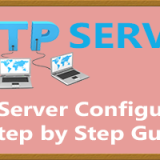RHEL 6 vs RHEL 7 Difference Between Previous and Newer Version
Red Hat Enterprise Linux 7 is an major / drastic change to enterprise. To serve / meet today’s business critical application performance RHEL 7 is the best Operating system to use, very light weight and container based. In this article we are going to see RHEL 6 vs RHEL 7 Difference Between Previous and Newer Version. RHEL 7 vs RHEL 6.
Complete RHEL 7 Certification Guide
What’s Changed in RHEL 7 Administration side
- System Boot time is optimized to boot faster
- Anaconda Installer completely redesigned
- Grub boot loader version changed from 0.97 to Grub 2
- No More SysV Initd system changed to Systemd system
- Network Interface names changed from ethx to ensxxx
- Introduced new concept of creating multiple Network profiles to activate based on network you connected (Ex. Home, Office and Other)
- Default Database is changed from MySQL to MariaDB
- No More editing of Network configuration file for assigning IP address and creating Teaming interfaces use nmcli utility
- Ifconfig and route commands are deprecated in RHEL 7, Replaced with ip command
- GNOME Version 2 replaced with GNOME 3 default Desktop
- System User UID range changed from 0-449 to 0-999
- Locate command is changed to mlocate
- Cluster Resource Manager changed from RGManager to Pacemaker and all CMAN features merged into Corosync
- Netstat command replaced with ss command
- NTP Daemon replaced with chronyd faster way to sync time RHEL 6 vs RHEL 7
- Directories /bin, /sbin, /lib and /lib64 moved under /usr directory
RHEL 6 vs RHEL 7 Difference
| Feature Name | RHEL 6 | RHEL 7 |
| Default File System | Ext4 | XFS |
| Kernel Version | 2.6.xx | 3.10.xx |
| Release Name | Santiago | Maipo |
| Gnome Version | GNOME 2 | GNOME 3.8 |
| KDE Version | KDE 4.1 | KDE 4.6 |
| Release Date | Wednesday, November 10, 2010 | Tuesday, June 10, 2014 |
| NFS Version | NFS 4 | NFS 4.1. NFS V2 is deprecated in RHEL 7 |
| Samba Version | SMB 3.6 | SMB 4.4 |
| Default Database | MySQL | MariaDB |
| Cluster Resource Manager | Rgmanager | Pacemaker |
| Network Interface Grouping | Bonding can be done as Active-Backup, XOR, IEEE and Load Balancing | Team Driver will support multiple types of Teaming methods called Active-Backup, Load-balancing and Broadcast |
| KDUMP | Kdump does’t support with large RAM Size | RHEL 7 can be supported up to 3TB |
| Boot Loader | Grub 0.97 /boot/grub/grub.cfg |
Grub 2 /boot/grub2/grub.conf |
File System Check |
e2fsck -Inode check. Block and size check –Directory Structure check -Directory Link Check -reference count check -Group Summary Check |
xfs_replair – Inode blockmap checks -node allocation map checks -Inode size check -Directory check -Path Name check -Link count check -Freemap check -Super block check |
| Process ID | Initd Process ID 1 | Systemd Process ID 1 |
| Port Security | Iptables by default service port is enabled when service is switched on. | Firewalld instead of iptables. Iptables support with RHEL 7, but we can’t use both of them at the same time. Firewall blocks ports by default you have to enable explicitly. |
| Boot Time | 40 Sec | 20 Sec |
| File System Size | EXT4 16TB with XFS 100TB | XFS 500TB with EXT4 16TB |
| Processor Architecture | 32Bit and 64Bit | Only 64Bit. |
| Network Configuration Tool | setup | nmtui |
| Host name Config File | /etc/sysconfig/network | /etc/hostname No need to edit hostname file to write permanent hostname simply use hostnamectl command |
| Interface Name | eth0 | ens33xxx |
Managing Services |
service sshd start service sshd restart chkconfig sshd on |
systemctl start sshd.service systemctl restart sshd.service systemctl enable sshd.service |
| System Logs | /var/log/ | /var/log journalctl |
| Run Levels | runlevel0 – Power Off runlevel1 – Single User Mode runlevel2 – Multi User without Networking runlevel3 – Multi User CLI runlevel4 – Not USed runlevel5 – GUI Mode runlevel6 – Restart |
There is no run levels in RHEL 7. Run levels are called as targets Poweroff.target rescue.target multi-user.target graphical.target reboot.target |
| UID Information | Normal User UID will start from 500 to 65534 System Users UID will start from 1 to 499 |
Normal User UID start from 1000 – 65534 System Users UID will start from 1 to 999 because Services are increased compare to RHEL 6 |
| By Pass Root Password Prompt | append 1 or s or init=/bin/bash to Kernel command line | Append rd.break or init=/bin/bash to kernel command line |
| Rebooting and Poweroff | poweroff – init 0 reboot – init 6 |
systemctl poweroff systemctl reboot |
| YUM Commands | yum groupinstall yum groupinfo |
yum group install yum group info |
Newly Introduced Features in RHEL 7
- No More 32-bit installation packages
- Docker is an Open Source Project, it helps to deploy applications inside Linux containers.
Thanks for the Read, Please Provide your valuable feedback on the same. RHEL 6 vs RHEL 7
100 Linux commands Video Playlist
Conclusion: There are lot many changes out of all few are listed above. For complete and detailed information please read Red Hat enterprise Linux 7 release notes. Download this Complete Changes list
Related Articles
RHCSA and RHCE Complete Certification Course Content
Online RHEL 7 Certification Training
RHCSA Certification Complete Road Map
Thanks for your wonderful Support and Encouragement
- Get Email | Download E-Books
- Facebook Page
- Youtube Channel
- Exclusive Telegram Group
- Discuss On WhatsApp Group







Hi
I thing there is some features mentioned in rhel6 instead of rhel7…. boot time, filesystem size and processor architecture
Nice ark
This shows awesome difference 🙂 I appreciate your efforts.
nice ravi
Nice but I want to know how to extract and tar
seems mistakenly KDE Version, Default Database & Bootloader has been swapped & it needs to be corrected.
In the above table looks like the Default DB name has got interchanged
Default Database MariaDB MySQL
good job
Boot Loader
Grub 2 /boot/grub2/grub.cfg
Grub 0.97 /boot/grub/grub.conf
interchange the above mentioned ……..you are wrongly mentioned
its very useful to me. thanks ark
Nice Information ARK….it will be very useful.
You job is awesome
Nice. This is very useful for us.
really it’s very useful for us and thank’s a lot
ak no hai bhai
very good knowledge about 6rhel vs 7rhel
very good knowledge about 6rhel vs 7rhel
Great
There is a spelling mistake in Filesystem check ” xfs_replair”…it will be xfs_repair